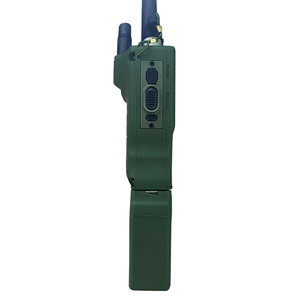
All categories
Featured selections
Trade Assurance
Buyer Central
Help Center
Get the app
Become a supplier

(110 products available)






































A 2-meter radio transceiver, also known as a 2-meter ham radio, is a type of two-way radio that amateur radio operators use on the 2-meter band. This band lies between 144 and 148 MHz in the VHF frequency band and derives its name from the wavelength (2 meters) of the radio wave. Several transceiver models are available, each with unique features to meet specific communication needs.
Many radio enthusiasts prefer basic high-power 2-meter transceivers that offer good range and clear audio. Certain models have power amplifiers to increase output power and extend talk range. Analog knobs control frequency and channel selection on vintage units. They may also have power output, squelch, and RF gain potentiometers for a hands-on tuning experience.
If key features are a priority, a handheld radio transceiver offers flexibility by integrating both transmitter and receiver circuits into one compact device. Some may even have built-in GPS, allowing operators to communicate their precise location coordinates over ham radio channels.
High-power options enable increased signal strength, which translates to longer communication ranges. In contrast, low-power handheld models are ideal for portable operations during outdoor free-station setups or emergencies where space is limited. No matter the size, all walkie-talkies use rechargeable battery packs as power sources so they can be quickly recharged and reused multiple times without end.
Dual-band transceivers, which cover both the 2-meter and 70-centimeter bands, provide more communication possibilities, while multiband units give even greater frequency coverage. Advanced features like digital modes, touch-screen controls, built-in GPS, and wide receive range give users additional capabilities for efficient communication. With such a diverse selection of 2-meter transceivers equipped with different functions tailored to various operating preferences, there is sure to be a suitable model that can satisfy specific requirements for ham radio activities.
2m radios come with various features that enhance their functionality and user experience. Here are the various feature highlights that may be useful for buyers:
The following are some uses of a 2 Meter ham radio transceiver:
Buying a two-meter ham radio transceiver isn't easy. There are many factors to consider before making a final decision. Below are some important things to consider when buying a new or used 2m transceiver:
Price and Budget
Price is often the most important factor people consider when buying radios. Two-meter band radio prices can differ depending on the functions, features, and whether they are new or used. As expected, models with the most advanced technology tend to cost more. Many enthusiasts start with the least expensive option and upgrade to more costly models as they gain more experience. Buying a used 2m radio can be a less expensive way to get more advanced features.
Power Output
The power output of the 2m transceiver affects its range. A higher power output means the user can reach farther with the radio. However, higher power output radios also need more battery. Most beginners start with radios that have 5 watts of power. This allows them to communicate within a few miles. A model with 10 to 15 watts is a good middle-ground option. First responders and those needing to go long distances often choose radios with 20 watts or more.
Frequency Range
The transceiver frequency range will determine the 2m band channels available to listen to and communicate on. Beginners may find the 144.200 — 144.275 MHz range sufficient. More experienced users often select radios that cover a wider span, like 144.000 – 148.000 MHz. Expanding the frequency range gives access to more channels for learning new skills and increased operating flexibility.
Size, Weight and Durability
The size, weight, and durability of the transceiver should be looked at, especially if it is going to be used in outdoor or mobile situations. Small-sized 2m band ham radios are often more convenience because they take up less space in cars and backpacks. Features like waterproofing and rugged construction protect radios from damage.
Users Needs and Operating Environment
The user's needs and operating environment should be considered before buying 2m radios. An emergency responder will need different features from a hiker or technician. Think about where the radio will be used most often and what channels and functions are required.
Q1: What antenna should be used for a 2-meter radio?
A1: The VHF 2m band has many antenna options, including simple dipoles, Yagi beams for FM satellite and simplex, and verticals for weak signal and mobile operating. Antennas should be resonant on 144-148 MHz with low SWR across that range.
Q2: What channel does the 2-meter radio transceiver use?
A2: The 2-meter band has many channels and amateur radio transceivers that include simplex frequencies for direct radio-to-radio communication. Some popular simplex frequencies are 144.200 MHz for FT8 and 144.246 MHz for CW.
Q3: What are the popular modes for 2-meter band radios?
A3: FM is the most common mode for casual 2-meter band communication, especially for repeaters and simplex nets. SSB and CW are popular for weak signal and long-distance VHF contesting. Digital modes like FT8, APRS, and packet also use 2m frequencies.